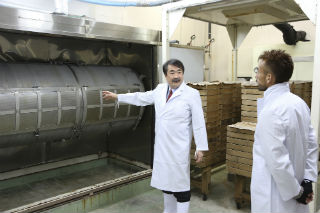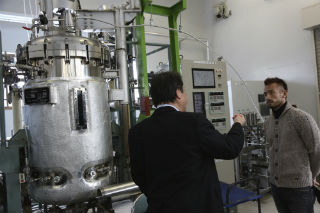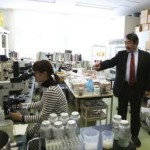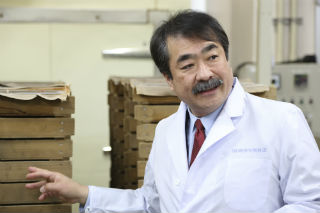 |
目次 Japan – a country fond of fermented foods”Fermented/brewed” foods have supported the food culture of Japan throughout its long history. ”Sake”, ”miso”, ”shoyu” and pickles are long time favorites of the Japanese. The climate is also suitable for fermentation. Throughout the history of fermentation, the ”koji-kin” is vital to Asian-specific ways of fermentation/brewing. Without it, good Japanese sake nor shoyu can be made. This rare manufacturer, ”Akita Konno Co., Ltd.” is responsible of manufacturing ”koji-kin”, and selling ”tane-koji” to breweries nationwide. |
Adapting cutting-edge technology into traditional methodsFounded in 1910. The company has a century-long history. You halt for a moment and think, ”Fermented food surely has a longer history!” However, ”koji-kin” was rarely manufactured and sold, and it is said that it all began in the Meiji period. The science of modern microbiology was first introduced to Japan in the Meiji period. The founder of Akita Konno Co., Ltd., Seiji Konno, adapted the method of cultivating original bacteria from a pure culture instead of the primitive way of creating tane-koji. This was the birth of the now famous tane-koji, ”Konno Moyashi”, of Akita Konno Co., Ltd. |
 |
|
|
Supporting the entire fermented food industryThere are various kinds of ”tane-koji”. There are suitable types of ”tane-koji” for any one given type of Japanese sake, or even just one type of ginjo sake, for instance. Therefore there are specific ”tane-koji” for ”miso”, ”shoyu”, ”mirin”, ”shochu”, etc. Furthermore, the company manufactures and conducts research on lactic acid bacteria and yeast fungus as well, which are used not merely for ”sake”, but for beer, bread, etc. Technology supports all of these activities. These days, studies are conducted in numerous fields other than just zymurgy, such as biotic pesticides, environment purifying microbial biomass, and research reagents. Fermented food represents traditional Japanese food, and Akita Konno Co., Ltd. supports the food culture on ”a microscoptic level”. |



